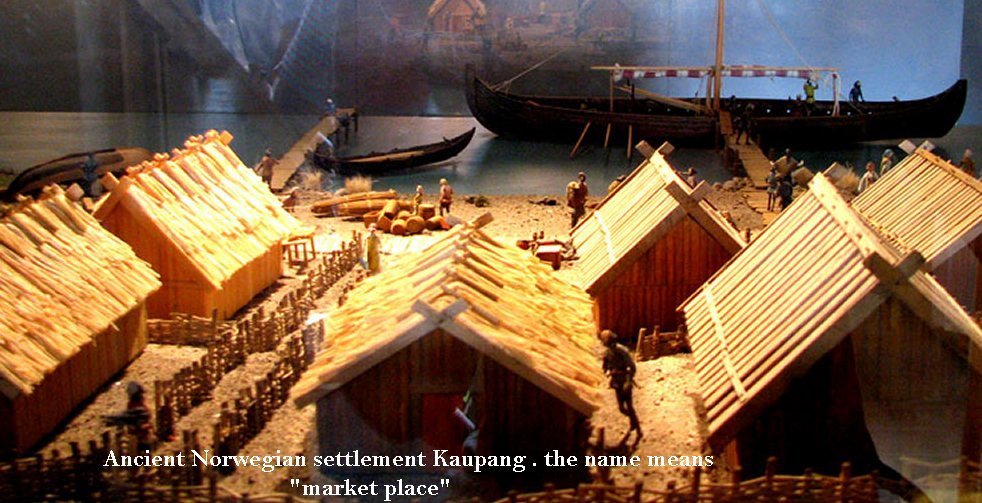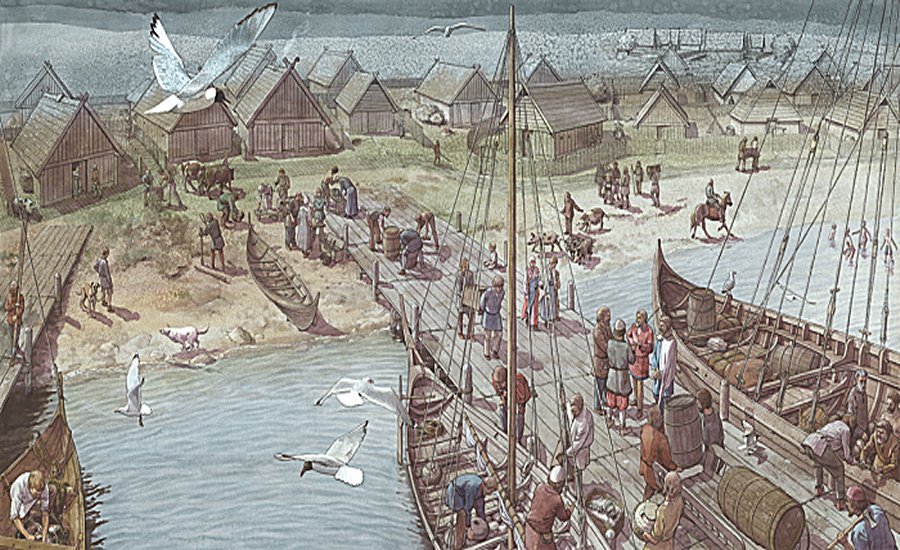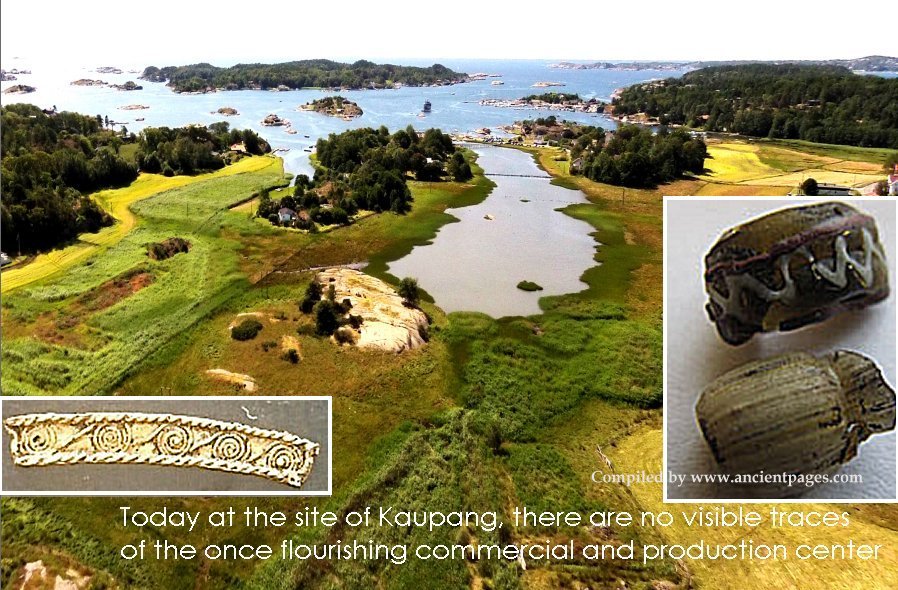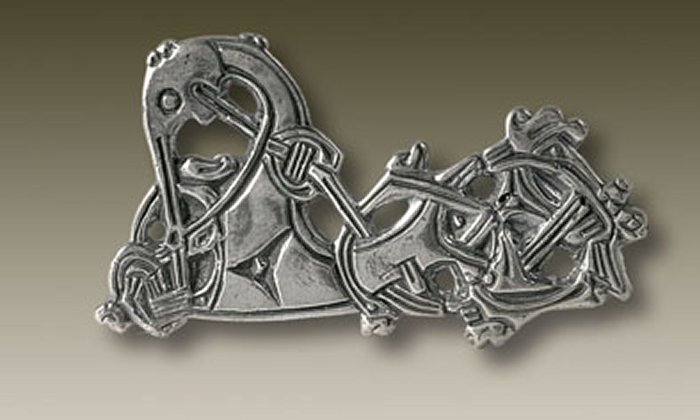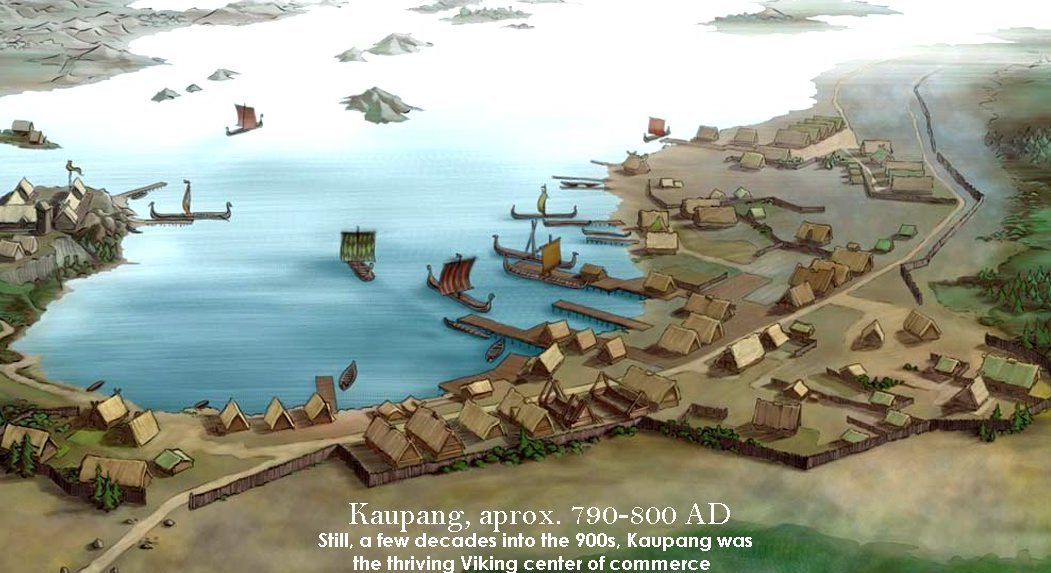Kaupang – Flourishing Viking Town – A Commercial Hub And Transit Port For North Sea Trade
A. Sutherland - AncientPages.com - Founded in the 780s, Kaupang (in Old Norse' kaupangr', 'market' or 'trading place) was Norway's important commercial and production city for Vikings and others.
Kaupang is located in Skiringssal (now known as Huseby), not far from Larvik, in county Vestfold at the mouth of the Oslofjord, in the south of Norway. Vestfold( means "West of the Fold") and Fold is the ancient name of the Oslofjord.
Kaupang Viking village – model. Image credit: vikingbyen.org
This particular region of Norway is known for its impressive archaeological sites like Oseberg, Gokstad, and Borre, all associated with the Viking period. Oseberg Ship -discovered at Oseberg, Norway, in 1904 by Knut Rom, a local farmer - is an extraordinary discovery.
Kaupang is mentioned in the Ynglinga saga (1225) by Snorri Sturluson and other early medieval sources that indicate that the area was an essential royal seat in the 8th and 9th centuries. The center - probably a seasonal but important market - flourished during the more significant part of the 9th century. It was a place of trade and cultural contact with foreigners and traders from all over Norway who came to buy and sell.
Although it was not as effective as its two Nordic "sister cities," Birka in Sweden and Hedeby in southern Jutland (now Schleswig, Germany), Kaupang was a well-known and highly effective hub for trade and production, a few decades into the 900s.
Archaeological Finds From Kaupang
"In the 8th century, there was only one town in Norway that could, with some right, be called a city. It was on a beach by the Viksfjorden in Larvik municipality in Vestfold, where the farm Kaupang is today.
Credits: Flemming Bau, 2004 - Historisk Museum
It was founded at the same time as the first Viking attacks on the British Isles and the continent. In its day, the place was probably called the shopping center in Skiringssal. In this tiny town, there were perhaps 400-600 souls, and their urban life in Norway got its early start some 1,200 years ago..." 1
As we see, at that time, not many people inhabited Kaupang, considered the first Norwegian city that functioned as a trade hub, transit port, and prosperous production center, where craftsmen produced large quantities of pins, bracelets, and harnesses for horses, both for wealthy customers and ordinary “folk flest” (the masses). They manufactured and traded goods of domestic and foreign goods.
Excavations carried out by a Norwegian archaeologist, Charlotte Blindheim (1917 - 2005), uncovered a wealthy graveyard, a complex of houses and workshops for metalworking with iron, bronze, and silver, where skilled artisans and smiths produced exquisite pieces of jewelry, ornaments and other metal goods of high quality.
Viking jewelry was beautiful and made by skilled craftsmen. A large-scale jewelry production in the Viking town of Kaupang developed about 1,150 years ago.
Weaving weights and spinning wheels were found at Kaupang's other workshops, indicating an extensive production of thread and textiles.
Artifacts (until today, about 100,000 finds) also include weapons from France, small pieces of amber from Birka and the Baltic Sea coast with cut marks, half-finished amber beads, and colorful glass beads from the Middle East and the Mediterranean, as well as Frankish beakers of glass and ceramic tubs from the Rhine districts of Germany.
Later excavations at the Kaupang site also revealed many Russian, Frankish, and Arabic (Cufic) silver coins and one bronze coin of great value, dating to the Roman period.
However, the production of vessels made of soapstone was the central part of Kaupang's export to Jutland and Hedeby.
This Oseberg-style brooch, dates to circa 900AD and related to finds revealed in the excavations at Kaupang. Image credit: Kulturhistorisk Museum/University of Oslo
Why Was Kaupang Trade Center Abandoned So Quickly?
In the late 9th century, the activity at Kaupang ceased rather quickly. The last funerals took place at Kaupang, and according to ancient sources, the site was abandoned for unknown reasons and changed into a ghost town in the early 10th century.
Towards the end of the Middle Ages, most of Kaupang's area was turned into cultivated land.
Several reasons have been suggested to explain Kaupang's decline. According to one theory, Kaupang was located in Vestfold County under Danish rule at that time. The establishment of Kaupang would have resulted from a Danish initiative around the year 800.
There are indications that the Danish hegemony weakened during the first half of the 10th century, and as a result, Kaupang began to decline gradually.
Later, when the Danish dominance under King Harald Bluetooth again gained ground there, the Danes probably wanted to establish another or several trade centers. Still, this time, they decided to choose other geographical locations and not Kaupang.
Updated on October 16, 2023
Written by A. Sutherland – AncientPages.com Staff Writer
Copyright © AncientPages.com. All rights reserved. This material may not be published, broadcast, rewritten or redistributed in whole or part without the express written permission of AncientPages.com
Expand for referencesHansen G. Everyday Products in the Middle Ages
Herbert Jankuhn., Trade and Settlement in Central and Northern Europe up to and during the Viking Period
T Douglas Price, An Archaeological History from the First Humans to the Vikings
More From Ancient Pages
-
 Lothal – ‘City of Dead’ – One Of The Most Prominent Ancient Places In Danger To Be Forgotten
Featured Stories | Jun 10, 2015
Lothal – ‘City of Dead’ – One Of The Most Prominent Ancient Places In Danger To Be Forgotten
Featured Stories | Jun 10, 2015 -
 Is This The World’s Oldest Joke?
Featured Stories | Feb 21, 2014
Is This The World’s Oldest Joke?
Featured Stories | Feb 21, 2014 -
 How Saul, A Farmer Boy Became The First King Of Israel
Featured Stories | Jan 20, 2022
How Saul, A Farmer Boy Became The First King Of Israel
Featured Stories | Jan 20, 2022 -
 Problems With The Age Of Man And Theory Of Evolution – What Happened In The Past?
Featured Stories | Oct 11, 2021
Problems With The Age Of Man And Theory Of Evolution – What Happened In The Past?
Featured Stories | Oct 11, 2021 -
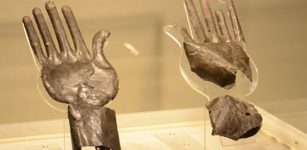 Mystery Of The Silver Hands Discovered In An Etruscan Tomb Full Of Secrets
Artifacts | Jun 12, 2015
Mystery Of The Silver Hands Discovered In An Etruscan Tomb Full Of Secrets
Artifacts | Jun 12, 2015 -
 Jure Grando – First ‘Real’ Historical Vampire Case Documented
Featured Stories | Jun 16, 2021
Jure Grando – First ‘Real’ Historical Vampire Case Documented
Featured Stories | Jun 16, 2021 -
 Secret Hidden Freemasonic Messages Concealed In Ancient Egyptian Artifacts And Roman Works – Curious Stellar Symbol – Part 2
Featured Stories | Feb 23, 2022
Secret Hidden Freemasonic Messages Concealed In Ancient Egyptian Artifacts And Roman Works – Curious Stellar Symbol – Part 2
Featured Stories | Feb 23, 2022 -
 Exceptionally Long-Lived Ancient Form Of Hydraulic Engineering Unearthed In The Nile Valley
Archaeology | Jun 13, 2023
Exceptionally Long-Lived Ancient Form Of Hydraulic Engineering Unearthed In The Nile Valley
Archaeology | Jun 13, 2023 -
 On This Day In History: Eminent Scottish Inventor Graham Bell Born – On Mar 3, 1847
News | Mar 3, 2017
On This Day In History: Eminent Scottish Inventor Graham Bell Born – On Mar 3, 1847
News | Mar 3, 2017 -
 Gashadokuro: A Terrifying Nocturnal Ghost Yokai With Voracious Appetite For Human Blood
Featured Stories | Jul 16, 2023
Gashadokuro: A Terrifying Nocturnal Ghost Yokai With Voracious Appetite For Human Blood
Featured Stories | Jul 16, 2023 -
 Mystery Of Ancient Sami People Buried Underwater – New DNA Breakthrough
Archaeology | Jun 12, 2019
Mystery Of Ancient Sami People Buried Underwater – New DNA Breakthrough
Archaeology | Jun 12, 2019 -
 Discovery In Alabama Reveals Evidence Of Skull Surgery In North America Thousands Of Years Earlier Than Previously Thought
Archaeology | Apr 2, 2022
Discovery In Alabama Reveals Evidence Of Skull Surgery In North America Thousands Of Years Earlier Than Previously Thought
Archaeology | Apr 2, 2022 -
 Oldest Scandinavian Ship-Burial Identified Re-Writes History – Amazing Find That Predates The Viking Age
Archaeology | Nov 14, 2023
Oldest Scandinavian Ship-Burial Identified Re-Writes History – Amazing Find That Predates The Viking Age
Archaeology | Nov 14, 2023 -
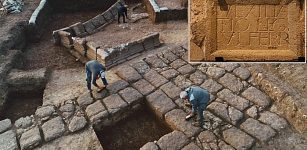 1,800-Year-Old Legio VI Ferrata Military Camp Uncovered In Israel
Archaeology | Feb 21, 2024
1,800-Year-Old Legio VI Ferrata Military Camp Uncovered In Israel
Archaeology | Feb 21, 2024 -
 Norse Watcher Spirit Vörðr Followed A Person From Birth To Death
Featured Stories | Dec 6, 2017
Norse Watcher Spirit Vörðr Followed A Person From Birth To Death
Featured Stories | Dec 6, 2017 -
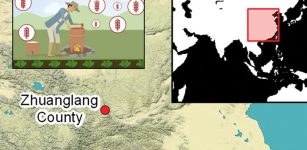 Thirsty Wheat Needed New Water Management Strategy In Ancient China
Archaeology | Nov 10, 2022
Thirsty Wheat Needed New Water Management Strategy In Ancient China
Archaeology | Nov 10, 2022 -
 Fenrir Killed At Ragnarok By Vidar Who Avenged His Father Odin’s Death
Featured Stories | Dec 10, 2018
Fenrir Killed At Ragnarok By Vidar Who Avenged His Father Odin’s Death
Featured Stories | Dec 10, 2018 -
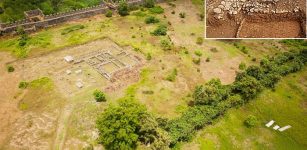 1,800-Year-Old Roman Winepress Found Near Roman Fort At Gonio (Apsaros), Georgia
Archaeology | Nov 23, 2022
1,800-Year-Old Roman Winepress Found Near Roman Fort At Gonio (Apsaros), Georgia
Archaeology | Nov 23, 2022 -
 On This Day In History: Ramesses II Became Pharaoh Of Ancient Egypt – On May 31, 1279 BC
News | May 31, 2016
On This Day In History: Ramesses II Became Pharaoh Of Ancient Egypt – On May 31, 1279 BC
News | May 31, 2016 -
 On This Day In History: Emperor Constantine I Passes His Famous National Sunday Law – On March 7, 321 AD
News | Mar 7, 2017
On This Day In History: Emperor Constantine I Passes His Famous National Sunday Law – On March 7, 321 AD
News | Mar 7, 2017

